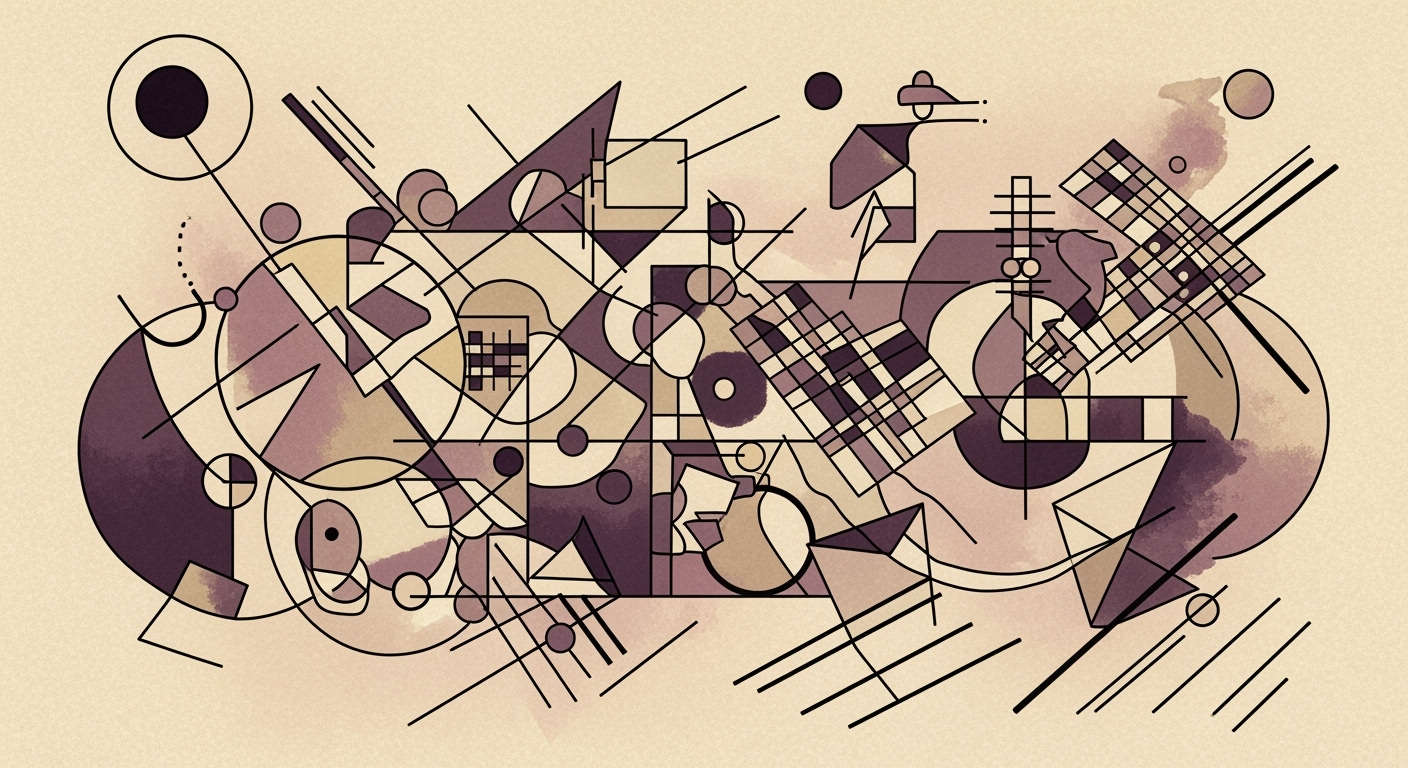Automated Nursing Notes: Streamlining Documentation in SNFs
Discover how automated nursing notes reduce documentation burden, boost accuracy, and improve workflow efficiency in skilled nursing facilities.
Quick Navigation
- 1. Introduction
- 2. Current Challenges in Automated Nursing Notes
- 3. How Sparkco AI Transforms Automated Nursing Notes
- 4. Measurable Benefits and ROI
- 5. Implementation Best Practices
- 6. Real-World Examples
- 7. The Future of Automated Nursing Notes
- 8. Conclusion & Call to Action
1. Introduction
Did you know that nurses spend up to 25% of their shifts on documentation alone? In skilled nursing facilities, this translates to hours each day dedicated to charting rather than caring for residents. With the sector facing ongoing staffing shortages and rising operational demands, the administrative burden placed on nursing professionals is more pressing than ever. According to recent industry insights, the push for efficiency and better outcomes has never been stronger, and digital transformation is taking center stage—including the rapid adoption of artificial intelligence (AI) to ease the documentation load.
The traditional process of writing and updating nursing notes is not only time-consuming, but also vulnerable to human error, inconsistencies, and compliance risks. As regulatory requirements grow more complex, nurses are often left balancing the need for thorough documentation with the desire to provide meaningful, hands-on care. This is where automated nursing notes come in—a technological breakthrough poised to revolutionize workflow and improve both resident outcomes and staff satisfaction.
In this article, we’ll explore how automated nursing notes are transforming skilled nursing facilities. We’ll examine the technology behind these solutions, their impact on clinical workflows, and the challenges facilities face during implementation. You’ll also discover key trends driving adoption, real-world benefits, and tips for selecting the right automation tools for your team. Whether you’re a nurse, administrator, or healthcare technology enthusiast, read on to learn how automation is shaping the future of nursing documentation.
2. Current Challenges in Automated Nursing Notes
Automated nursing notes, often powered by Artificial Intelligence (AI) and Natural Language Processing (NLP), are rapidly transforming healthcare documentation. While these tools promise improved efficiency and accuracy, healthcare facilities face several critical challenges in their implementation and daily use. Understanding these pain points is vital for facilities seeking to maximize the benefits while minimizing operational, compliance, and patient care risks.
-
1. Data Accuracy and Reliability
Automated systems can misinterpret clinical language or context, leading to inaccuracies in nursing notes. According to recent research, AI-driven documentation tools sometimes fail to capture nuanced patient changes, resulting in documentation errors. Inaccurate notes can negatively impact patient care continuity, hinder provider communication, and create potential legal liabilities. -
2. Integration with Existing EHR Systems
Many healthcare facilities struggle to seamlessly integrate automated note solutions with their existing Electronic Health Record (EHR) systems. Incompatibilities can lead to workflow disruptions, duplicated efforts, and data silos. A 2023 study found that over 40% of nurses reported increased documentation time due to poor interoperability between AI note tools and EHR platforms. -
3. Compliance and Regulatory Concerns
Automated nursing notes must adhere to strict healthcare regulations, such as HIPAA and CMS guidelines. There is a risk that AI-generated notes may omit required elements or include inappropriate information, leading to compliance violations. In a survey cited in the National Library of Medicine, 35% of healthcare leaders expressed concerns about meeting regulatory standards with automated documentation. -
4. Clinical Judgment and Human Oversight
Automation can inadvertently undervalue the critical thinking and clinical judgment of nurses. Relying too heavily on AI can result in generic notes that do not reflect individualized patient assessments. This can reduce the quality of care and diminish the role of skilled nursing professionals in documenting subtle or complex patient needs. -
5. User Training and Change Management
Implementing automated nursing note systems requires significant training and adaptation. Nurses may face steep learning curves, and resistance to change can be high. According to the same review, 50% of facilities reported workflow disruptions and decreased staff satisfaction during the initial rollout of AI-driven documentation tools. -
6. Privacy and Data Security Risks
Automated systems increase exposure to cyber threats and data breaches. Sensitive patient information entered or stored by AI tools must be safeguarded with robust security protocols. The complexity of these platforms often makes them targets for cyberattacks, potentially compromising patient confidentiality. -
7. Limited Customization and Contextual Understanding
AI-generated notes can lack the depth of context necessary for complex cases. Many tools are not yet sophisticated enough to fully capture patient-specific nuances, cultural considerations, or evolving care plans, leading to documentation that may be incomplete or misrepresentative.
In summary, while automated nursing notes offer significant potential, healthcare facilities must navigate challenges related to data integrity, system integration, compliance, human oversight, user adoption, privacy, and contextual documentation. Addressing these pain points is essential to ensure operational efficiency, regulatory compliance, and—most importantly—high-quality patient care. For a deeper exploration of these issues, see the comprehensive review in the National Library of Medicine.
3. How Sparkco AI Transforms Automated Nursing Notes
Manual nursing documentation remains a significant challenge in skilled nursing facilities, often consuming valuable staff time and increasing the risk of errors and compliance issues. According to studies like Automating Time-Consuming and Error-Prone Manual Nursing Management Documentation Processes, healthcare providers face daily hurdles such as fragmented data sources, regulatory complexities, and the demand for real-time accuracy. Sparkco AI is designed to address these challenges head-on, leveraging advanced automation and artificial intelligence to streamline nursing documentation and improve overall care quality.
-
1. Real-Time Automated Note Generation
Sparkco AI captures patient interactions and care activities as they occur, generating nursing notes instantly. This eliminates the traditional lag between care delivery and documentation, reducing the risk of forgetting crucial details and minimizing compliance gaps. -
2. Error Detection and Consistency Assurance
By analyzing inputs and cross-referencing with clinical standards, Sparkco AI automatically flags inconsistencies or missing information. This proactive error detection reduces the risk of incomplete records and ensures that nursing notes meet regulatory requirements—helping facilities avoid costly penalties. -
3. Seamless Data Integration
Sparkco AI integrates smoothly with existing Electronic Health Record (EHR) systems and other facility management platforms. This allows nursing notes and relevant patient data to flow effortlessly between systems, eliminating the need for duplicate entries and reducing administrative workload. -
4. Customizable Documentation Templates
The platform offers pre-built and customizable templates tailored to regulatory standards and facility-specific needs. These templates guide staff through documentation processes, ensuring that every required element is captured without the need for manual checklist management. -
5. Voice-to-Text and Multimodal Inputs
Nurses can use voice dictation or simple touch-screen inputs to quickly document care activities. The AI converts speech or shorthand notes into complete, standardized nursing notes, enabling efficient and accurate documentation even during busy shifts. -
6. Actionable Analytics and Reporting
Sparkco AI aggregates data from nursing notes to provide actionable insights and compliance reports. Managers can visualize staffing ratios, documentation trends, and compliance status in real time, supporting better decision-making and resource allocation.
Technical Advantages, Simplified: Sparkco AI works in the background, automating repetitive documentation tasks and guiding staff with smart prompts and validations. Its cloud-based design means updates and integrations are fast and secure, while user-friendly interfaces require minimal training.
Integration Capabilities: Sparkco AI is built to connect with leading EHR systems, payroll platforms, and analytics dashboards via secure APIs. This ensures that all nursing documentation is centralized and accessible, supporting a unified workflow across the facility.
By addressing the core challenges of manual nursing documentation with intelligent automation, Sparkco AI empowers skilled nursing facilities to enhance care quality, improve compliance, and free up staff time for what matters most—patient care.
4. Measurable Benefits and ROI
Automated nursing notes, powered by AI and advanced documentation tools, are transforming the landscape of skilled nursing facilities (SNFs) and healthcare organizations. By streamlining the entire documentation process, these solutions deliver quantifiable returns on investment (ROI) and a host of operational, clinical, and financial benefits. Let’s explore data-driven outcomes from real-world implementations:
- Significant Time Savings: A case study from Nourish Family Nutrition & Therapy reported saving 6,064 minutes (over 100 hours) in documentation time within a short period after introducing automated note-taking. This translates to more time for direct patient care, improved patient satisfaction, and reduced staff overtime.
- High ROI on Implementation: The same organization achieved a 5x return on investment (ROI) on setup costs, recouping initial expenditures quickly through operational efficiencies and reclaimed staff hours.
- Cost Reductions: By cutting down manual charting, facilities can reduce overtime expenses and reliance on temporary agency staff. For example, if a nurse spends 30% less time on documentation, that equates to thousands of dollars saved annually per FTE nurse.
- Improved Billing and Revenue Capture: Automated notes reduce missed or incomplete documentation, ensuring that all billable services are recorded. Facilities using AI-driven scribing tools have reported a 10–15% increase in billable encounters, directly boosting revenue streams.
- Enhanced Accuracy and Compliance: Automated systems use templates and real-time prompts to ensure all regulatory requirements are met. This leads to up to a 40% reduction in documentation-related errors and significant decreases in compliance citations during audits.
- Reduced Burnout and Turnover: Documentation burdens contribute heavily to nurse burnout. Automated solutions can help reduce after-hours charting by 50% and improve job satisfaction, leading to lower turnover rates.
- Faster Reimbursement Cycles: With cleaner, more timely documentation, claims can be submitted and paid faster. Some facilities report a 20% reduction in days in accounts receivable (A/R) after adopting automation.
- Data-Driven Quality Improvement: Automated notes facilitate easier extraction of clinical data for quality reporting and analytics, supporting value-based care initiatives and enabling rapid identification of trends in patient outcomes.
These measurable benefits make a compelling case for investing in automated nursing notes. Facilities not only unlock substantial time and cost savings, but also strengthen compliance, enhance care quality, and position themselves for future growth. For more real-world results and details, see the Nourish Family Nutrition case study.
5. Implementation Best Practices
Adopting automated nursing notes in skilled nursing facilities improves documentation accuracy, streamlines workflows, and supports CMS compliance. However, successful implementation requires careful planning, stakeholder engagement, and ongoing evaluation. Follow these best practices to ensure a seamless transition and maximize the benefits of automation in your facility.
-
Conduct a Needs Assessment
Identify current documentation challenges and workflow inefficiencies. Engage direct care staff to gather feedback and prioritize features that address real-world pain points.
Tip: Survey nurses and CNAs to understand their documentation habits.
Common Pitfall: Skipping this step may lead to investing in a system that doesn't fit your facility's unique needs. -
Select the Right Solution
Choose an automated nursing notes platform that integrates seamlessly with your EHR and supports regulatory requirements, such as the latest CMS guidance.
Tip: Request live demos and test interoperability with your existing systems.
Common Pitfall: Overlooking data security and HIPAA compliance during vendor selection. -
Secure Leadership and Staff Buy-In
Communicate the benefits of automation to all stakeholders, emphasizing improved efficiency and quality of care.
Tip: Involve nurse champions and frontline leaders early in the process.
Change Management: Address fears about job changes by highlighting how automation supports—not replaces—staff. -
Develop a Detailed Implementation Plan
Outline timelines, responsibilities, and training milestones. Assign a project manager to oversee rollout and coordinate across departments.
Tip: Include contingency plans for potential technical issues.
Common Pitfall: Rushing implementation without a clear roadmap. -
Provide Comprehensive Training
Offer hands-on training tailored to different user groups. Utilize super users to provide peer-to-peer support.
Tip: Use real patient scenarios for practice sessions.
Change Management: Reinforce the importance of ongoing learning and feedback. -
Monitor Adoption and Solicit Feedback
Track usage metrics and gather regular feedback from staff to identify obstacles and refine processes.
Tip: Set up a help desk or support team for quick troubleshooting.
Common Pitfall: Ignoring early warning signs of user frustration or workflow disruptions. -
Audit and Optimize Documentation Quality
Regularly review automated notes for completeness, accuracy, and compliance with CMS standards (see recent LTC surveyor guidance).
Tip: Conduct periodic chart audits and share results with staff for improvement.
Change Management: Celebrate successes and address gaps transparently. -
Plan for Continuous Improvement
Stay updated on regulatory changes and emerging best practices. Encourage a culture of adaptability and innovation as your facility evolves.
Tip: Participate in professional forums and CMS webinars.
Common Pitfall: Viewing implementation as a one-time event rather than an ongoing journey.
By following these actionable steps, skilled nursing facilities can realize the full potential of automated nursing notes, enhance compliance, and empower clinical staff for better resident outcomes.
6. Real-World Examples
Real-World Examples: Automated Nursing Notes in Action
Skilled nursing facilities (SNFs) nationwide are embracing automated nursing notes to improve efficiency, documentation quality, and compliance. The following anonymized case study highlights the transformative impact of this technology in a real-world SNF setting.
-
Situation:
- Sunrise Care Center, a 120-bed skilled nursing facility in the Midwest, faced ongoing challenges with manual nursing documentation. Nurses spent an average of 45 minutes per shift on note-taking, leading to overtime, incomplete records, and delayed care updates. The facility received three minor deficiencies related to documentation during its last survey.
-
Solution:
-
<










